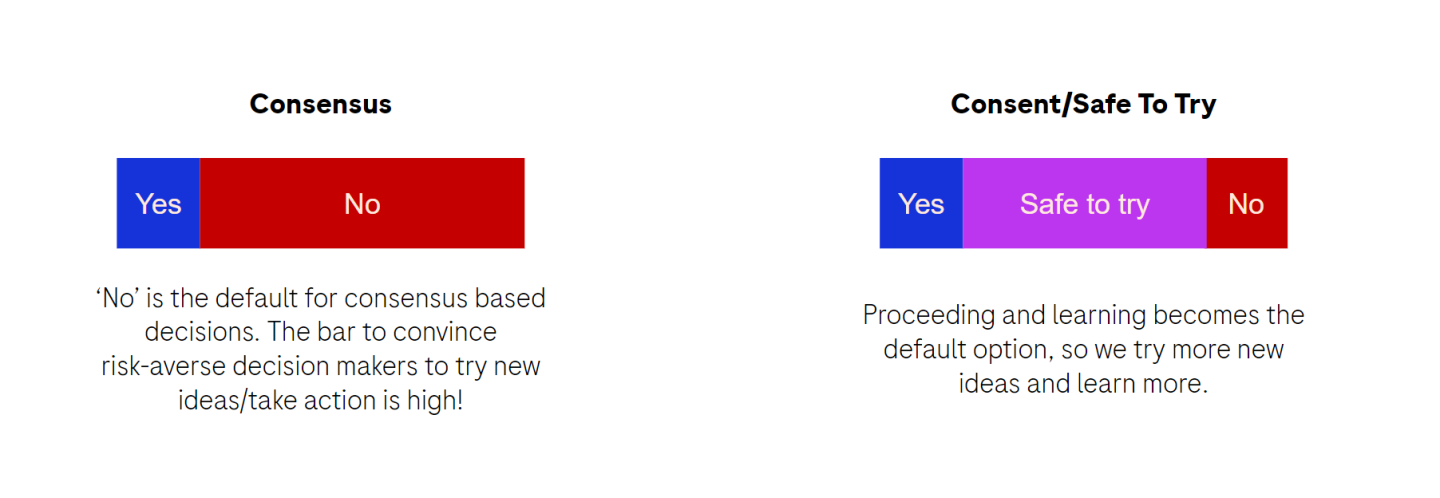The problem with decisions is that we are afraid of consequences that, in most cases, are either unclear or not real. Asking this one question will get you unstuck: Is it safe to try?
“Safe to try” is a powerful heuristic that can dramatically accelerate a team’s decision making. It’s about considering whether the decision is something you can live with for a period of time in order to learn something new. Generally, unless a decision is going to cause irreparable harm, it’s probably worth giving it a try.
Principles for safe-to-try:
- Everything is an experiment
We just need to try something out for long enough to learn what worked and what didn’t. - Consent is not consensus
In a consent-based system, you’re not trying to please everyone. - Progress is always better than perfection
Trying to get things “right” is a common obsession in business, and it’s not serving us.
Safe-to-try decisions are not perfect,; but they drive action. To evaluate if a proposal should be accepted or rejected, consider the following:
- Will the decision move the team backward?
- Will the proposal cause harm which cannot be mitigated promptly?
Source 1: What does «safe to try» actually mean?
Source 2: Safe-to-Try: A Way of Making Tough Decisions
